#Flutter framework benefits
Explore tagged Tumblr posts
Text
Top Reasons to Choose Flutter for Mobile App Development
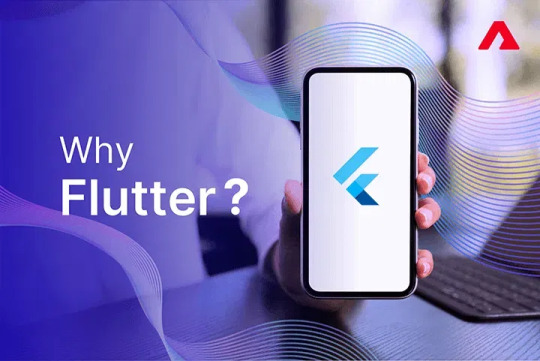
Discover why Flutter is a top choice for mobile app development in this comprehensive guide from Atharva System. Learn how Flutter enables faster development, cost efficiency, and seamless cross-platform compatibility using a single codebase. The guide highlights key advantages such as customizable UI, native-like performance, and strong community support. Whether you're a startup or an enterprise, this resource helps you understand how Flutter streamlines app development and delivers robust, high-performing mobile applications.
#Flutter mobile app development#Cross-platform app development#Flutter development guide#Benefits of Flutter framework
0 notes
Text
FlutterFlow: The Right Platform to Embark Your Startup Journey

In the cut-throat competitive landscape of businesses, time to market, technology used, and profits generated are the cornerstones of defining success. The capability to implement advanced technology to innovate your business application and execute it successfully gives you a competitive edge. Traditional app development, with its daunting coding requirements and long timelines, often poses challenges for startups with an extended time to market.
Enters, low-code platforms that offer a simple solution to accelerate development without compromising on development quality. One of such platforms gaining popularity is, FlutterFlow.
Let’s explore why FlutterFlow is loved by so many startups and what it brings to the table. Before we get into the nitty-gritty of FlutterFlow, let’s dig in a little deeper to understand low-code development.
What Is Low Code Development?
Low code development refers to software development environments that let developers build applications through graphical user interfaces rather than traditional codes. The platforms reduce the amount of manual coding, which results in faster development lifecycles and easier iterations.
Benefits Of Low-Code Platforms

Rapid development and deployment speed.
Resource management with smaller development teams.
Better solutions with less coding needs
Easy to use by non-technical users, making it easier for them to contribute to the app development process.
Much easier to make changes and updates.
Thus with the ease and accessibility to even non-technical users, Low Code development is helping startups create professional applications on a budget. Some of the popular low-code platforms are Appian, Creatio, Outsystems, FlutterFlow, etc.
FlutterFlow gets a lead over others as it is taking low code development to new heights. Let’s now explore what makes FlutterFlow a perfect platform for your startup.
What is FlutterFlow?
FlutterFlow is built on Google’s Flutter framework, designed for developing cross-platform applications for Android, iOS, and the web. It offers a visual design interface, allowing users to plan app layouts effortlessly through simple drag-and-drop capability. FlutterFlow helps real-time collaboration, making it best for teams working together on a development project.
With an easy-to-use interface, no technical skills, and a strong framework to back it, FlutterFlow has been gaining popularity since it was conceived. Whether you are a startup or a small-scale business, if you want to create a mobile application that resonates with your audience, then, choose the FlutterFlow platform and let things flow.
Why FlutterFlow Is Perfect for Startups?
FlutterFlow is taking low code development to new heights by offering a visual development environment where users can build the solutions they want without compromising on app feature quality.
FlutterFlow basically incorporates and promotes best practices for software development. The platform streamlines complex IDE tasks into an intuitive UI, making developer interactions easier. To use the platform one needs basic training, thus even non-developers get into the basics of core app development concepts.
FlutterFlow entered the market with a vision to go from low code development to visual development. Here’s how the team is planning to achieve their goals:
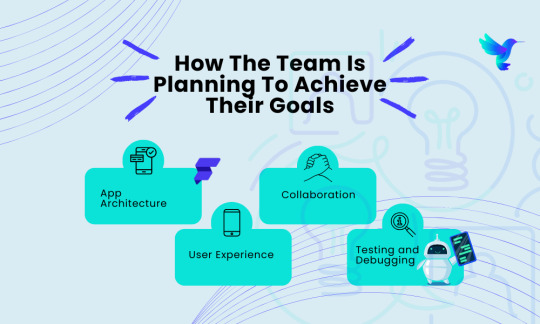
App Architecture: The codes generated using FlutterFlow meet the standards set by Flutter and Dart. They abide by the standard app market, thus helping users with a credible app development solution.
Testing and Debugging: The developers can simply test and debug the applications by running, testing, and resolving issues. This allows startups to enter the market with a flawless and highly rewarding application.
Collaboration: With modular development, smart version controls, and comprehensive access management, users can collaborate easily for better results.
User Experience: With an easy-to-explore interface, edit on clicks, ensure consistency, incorporate AI where possible, and users can switch between code and GUI.
FlutterFlow offers startups an environment where they can cross-operate, collaborate, and discuss their problems. The platform is conceived to make development easier, more convenient, and accessible for non-tech people also, who can easily make their contribution to the web now!
Some of the other advantages of the platform are:
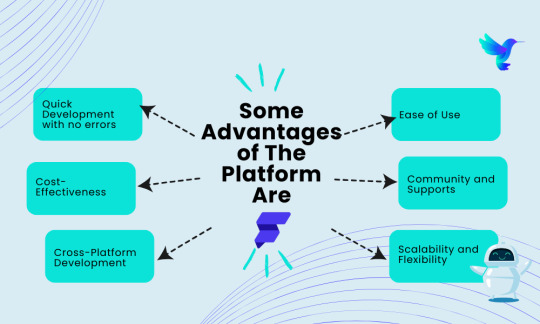
1. Quick Development With No Errors
The cheat code to making the best of your business is, to enter the market ASAP.
One of the most significant benefits of FlutterFlow is the speed at which the projects may develop. The platform’s visual interface and pre-built elements allow for speedy prototyping and development. Startups can fast-build minimum viable products (MVPs) to check thoughts in the marketplace without making a heavy investment in development sources.
Thus, you can create a product faster, take it to the market, and get feedback easily. We understand not every product works well on the first go, but with FlutterFlow you get the ease of making iterations and offering your audience a solution they’d appreciate.
2. Cost-Effectiveness
Most startups run on budget constraints. FlutterFlow helps reduce investing in large teams of seasoned developers. The platform’s drag-and-drop capability and pre-built templates lessen the quantity of custom code required, which translates to lower support and maintenance fees. A developer with lesser experience and understanding of the development languages can also, easily create an app here making it easier for you to invest your funds in other business verticals too.
3. Cross-Platform Development
FlutterFlow’s foundation lies at the Flutter framework which guarantees that applications are cross-platform by default. Thus by picking FlutterFlow startups can create and deploy applications to iOS, Android, and net platforms simultaneously. This cross-platform functionality is crucial for startups looking to maximize their target audience and digital presence without incurring the expenses and complexities of keeping separate codebases for specific platforms.
4. Ease Of Use
FlutterFlow is designed to be user-friendly, making it accessible to both skilled app developers and those with limited coding exposure. This democratization of app development means that non-technical founders and team members can contribute to the development procedure. FlutterFlow also gives tremendous documentation and tutorials, further decreasing the barrier to entry.
Because it is easy to use, the startup founders can make changes to the product as they want.
5. Scalability And Flexibility
Despite being a low-code platform, FlutterFlow gives massive flexibility. Users can add custom code to increase the functionality of their programs, making sure that they are now not confined with the aid of the platform’s built-in features. FlutterFlow additionally integrates seamlessly with backend services like Firebase and Supabase, bearing in mind robust and scalable backend solutions.
6. Community And Support
Being part of the Flutter ecosystem, FlutterFlow advantages from an active and supportive community. This network affords a wealth of assets, tutorials, and discussions that could assist startups conquer challenges and make the most of the platform. Additionally, FlutterFlow is continually evolving, with new capabilities and improvements being brought often based on user comments.
New users can always connect with the community for any assistance and customization thus creating a growth-oriented and learning ecosystem.
These are some of the most popular reasons why FlutterFlow is one of the most prominent low-code platforms for startups. So, if you are aiming to start your entrepreneurial journey and aren’t sure how to start without investing much in development, FlutterFlow is your trusted development partner.
Addressing Common Concerns of Using FlutterFlow
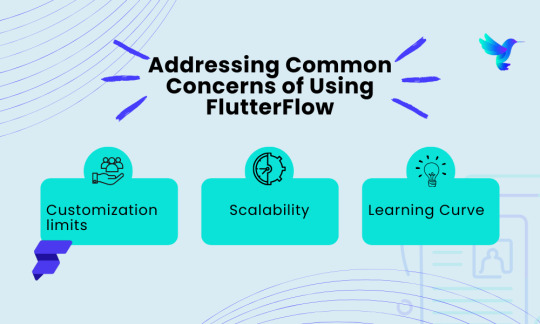
FlutterFlow may offer a great advantage for startups and businesses, but it does come with some limitations. Let’s explore the common concerns when working on the platform.
Customization Limits
The most common and often-faced concern with low-code platforms is the potential difficulty of customization. However, FlutterFlow mitigates this with the aid of custom code integration. This ensures that whilst you can enjoy the speed and efficiency of low-code development, you still have the flexibility to put into effect custom functions as wanted.
Scalability
Another concern is scalability. FlutterFlow is designed to handle significant user load and great data volumes through its integration with a powerful backend. Startups can hopefully scale their packages as their customer base expands, knowing that the platform is designed and developed to meet their business needs.
Startups with a limited user base can use the capabilities of FlutterFlow for future preparedness.
Learning Curve
While FlutterFlow is user-friendly, there can still be a strong learning curve, specifically for those new to app development. However, the considerable assets available, together with documentation, tutorials, and network help, assist mitigate this challenge.
Startups can always seek assistance from other development agencies experienced in FlutterFlow to boost learning and make sure first-class practices are followed. With little time and dedication, one can excel in their skills and implement them to build innovative products for the future.
Conclusion
FlutterFlow represents a tremendous advancement in the realm of low-code development systems, particularly for startups. Its combination of speed, value-effectiveness, ease of use, and flexibility makes it a super choice for early-stage businesses seeking to deliver their thoughts to the marketplace. By leveraging FlutterFlow, startups can reduce development time and fees, build cross-platform applications, and remain agile in a competitive landscape.
For startups and small-scale organizations trying to maximize their assets and boost their development process, FlutterFlow offers a compelling solution that bridges the gap between rapid prototyping and strong, scalable app development. As the platform continues to evolve and improve, it’s far poised to end up a good extra effective device for startups aiming to innovate and be triumphant in the virtual age.
#FlutterFlow#Custom App Development#FlutterFlow Startup businesses#Challenges for startups businesses#Low Code Development#graphical user interfaces#Benefits Of Low-Code Platforms#Google’s Flutter framework#cross-platform applications#Hire Flutter Developers#software development#advantage for startups and businesses
0 notes
Text
Cross-Platform App Development Services: Breaking Barriers and Expanding Reach

In today's digital era, mobile applications have become an integral part of our lives. Whether it's for social networking, e-commerce, or productivity, mobile apps have revolutionized the way we interact with technology. However, developing an app that can cater to the diverse needs of users across different platforms can be a daunting task for businesses. This is where cross-platform app development services come into play.
What is Cross-Platform App Development?
Cross-platform app development is the process of building mobile applications that can run on multiple operating systems, such as iOS and Android, using a single codebase. Unlike native app development, which requires separate codebases for each platform, cross-platform development allows businesses to save time, resources, and effort by creating a single app that works across various platforms.
The Advantages of Cross-Platform App Development:
1. Cost-Effectiveness: Developing separate apps for different platforms can be expensive. Cross-platform development enables businesses to significantly reduce costs by reusing a single codebase across multiple platforms. This approach also minimizes the need for hiring platform-specific developers, resulting in further cost savings.
2. Time Efficiency: Cross-platform frameworks and tools provide developers with the ability to write code once and deploy it on multiple platforms. This drastically reduces the time required for development, testing, and deployment, allowing businesses to bring their apps to market faster and gain a competitive edge.
3. Consistent User Experience: With cross-platform development, businesses can ensure a consistent user experience across different platforms. By using a single codebase, developers can maintain design and functionality consistency, resulting in a seamless experience for users, regardless of the device or operating system they use.
4. Wider Market Reach: By developing a cross-platform app, businesses can reach a broader audience as their application can run on various devices and operating systems. This expanded market reach enhances brand visibility and increases the potential user base, leading to greater customer acquisition and revenue generation.
5. Easy Maintenance: Updating and maintaining separate codebases for different platforms can be challenging. Cross-platform development simplifies the maintenance process as changes and updates can be applied to a single codebase, ensuring consistency and reducing the chances of introducing bugs or inconsistencies across platforms.
Choosing the Right Cross-Platform Development Framework:
When it comes to cross-platform app development, there are several frameworks available, each with its unique features and capabilities. The choice of framework depends on various factors such as project requirements, target audience, performance needs, and developer expertise. Some popular cross-platform frameworks include React Native, Flutter, Xamarin, and Ionic.
Partnering with Cross-Platform App Development Services:
While cross-platform app development offers numerous benefits, it requires technical expertise and experience to leverage the full potential of these frameworks. This is where partnering with cross-platform app development services can make a significant difference.
Professional app development services specializing in cross-platform development have the necessary skills, knowledge, and resources to create high-quality, feature-rich applications that can run seamlessly across multiple platforms. These services understand the intricacies of various frameworks, ensuring optimal performance and user experience.
Additionally, cross-platform app development services keep up with the latest industry trends and advancements, allowing businesses to incorporate cutting-edge features and technologies into their applications. They also provide ongoing support, maintenance, and updates, ensuring that the app remains up-to-date and compatible with the latest devices and operating system versions.
Conclusion:
Cross-platform app development services have emerged as a game-changer for businesses looking to develop mobile applications that can reach a wider audience while optimizing costs and development time. By leveraging the benefits of cross-platform development, businesses can break barriers, expand their reach, and deliver engaging experiences to users across multiple platforms.
Whether you are a startup or an established enterprise, partnering with cross-platform app development services can unlock new opportunities and drive your business forward in the ever-evolving mobile landscape.
Source
#AppDevelopment#WebDevelopment#MobileApps#WebApps#SoftwareDevelopment#UIUXDesign#MobileDevelopment#WebDesign#CodeLife#TechSolutions#AppDesign#MobileTech#WebDev#DigitalTransformation#ResponsiveDesign#Innovation#TechIndustry#AppSolutions#WebSolutions#CodeNerds
23 notes
·
View notes
Text
Construct Your Ideal Ecommerce Website with Top-Notch Ecommerce Website Code
Businesses in modern times need robust internet-based operations to achieve success. The establishment of a completely operational Ecommerce Website helps both new and established retailers to increase their sales while reaching wider customer audiences. The correct Ecommerce Website Code enables you to build a smooth shopping platform that delivers both user-friendly features along with safe operations and superior speed.
Why Choose a Custom Ecommerce Website?
Companies that invest in custom Ecommerce Website construction achieve superior adaptability together with enhanced operational capability beyond generic online store products. Organizations gain flexibility to adapt their online store design based on their individual specifications through this implementation. All components of an Ecommerce Website require optimization for maximizing customer interaction and purchase conversion rates including its interface design and secure payment procedures.
Business expansion begins through the implementation of an ecommerce application
New mobile commerce developments require businesses to adapt through investing in an Ecommerce App for their market survival. Through a mobile application customers can access a better shopping experience because they can browse and buy products at any time and from any location. A feature-rich Ecommerce App helps businesses to attract customers more frequently while making them stick to the brand longer and bring in more revenue.
Why You Need an Ecommerce Android App
Businesses should choose an Ecommerce Android App because Android stands as the main operating system for mobile devices. The user-friendly interface of an Ecommerce Android App works with secure payments methods and order tracking ability to reach more customers. An Ecommerce Android App provides Android users with an uninterrupted shopping experience for both new and existing online stores.
The Importance of an Ecommerce Mobile App
People choose to buy their goods through mobile phones since smartphones provide them a faster shopping experience compared to desktop computers. The Ecommerce Mobile App provides users with customized shopping experiences through push notifications which promotes their products and streamlines product access. A business that implements an Ecommerce Mobile App will find success in effective user engagement which drives sales expansion.
Develop high-performance mobile apps through Ecommerce Flutter programming
A cross-platform app solution can be best reached through the use of Ecommerce Flutter Code. The Flutter framework enables developers to generate one app solution which operates without disruption between Apple iOS and Google Android platforms. The code of Ecommerce Flutter allows businesses to establish performance-based applications which deliver a unified user experience between diverse platforms.
Conclusion
Your business growth will greatly benefit from both an efficient Ecommerce Website Code that supports a well-designed Ecommerce Website. The investment in either Ecommerce App or Ecommerce Android App development enables businesses to expand their customer base. Businesses that use Ecommerce Mobile Apps and Ecommerce Flutter Code together deliver an immersive shopping environment which achieves elite performance capabilities on all platforms.
1 note
·
View note
Text
Comprehensive Guide to Cross-Platform Mobile App Development
Discover the top cross-platform mobile app development tools, frameworks, and benefits. Learn how React Native and Flutter can help you build cost-efficient, high-performing apps for iOS and Android.
#development#tech#dedicated developers#usa#business#programming#webdevelopment#mobile app development#technology#cross platform#app development
1 note
·
View note
Text
Contract Hiring Mobile App Developers in 2024-25
In this digitally dependent world, one of the fastest-growing technologies is the introduction of mobile apps for brands. Businesses utilize apps to drive creation, quick access to information, customer communication, and engagement with the brand.
The growth rate of mobile-based applications is expected to be 14.3% from the year 2024 to 2030 – Grand View Research
This makes mobile app developers one of the most in-demand skills in the market. For a successful project, the presence of skilled professionals is essential and businesses are also inclined to hire app developers remotely. Read the complete guide and let’s reveal how contract hiring mobile app developers is beneficial for businesses.
Why is Contract Hiring Beneficial?
When to Hire Mobile App Developers on Contract and Not on Employment?
Identifying the Technology & Scope of Work for the Mobile App Project
Sources of Contract Hiring
Interviewing and Screening Candidates
Ideal Terms & Clauses for Contract Hiring
Setting up effective Remote Communication and Collaboration
Conclusion
Why is Contract Hiring Beneficial?
Contract work also commonly known as the gig economy is highly popular in the market. Businesses can easily fill the temporary skill gap in the company by indulging with contract workers on project to project basis.
However, the key aspect is that businesses should know when to opt. to hire remote app developers on a contract basis.
When to Hire Mobile App Developers on Contract and Not on Employment?
Project & Talent wise need only
If your project needs short-term assistance from a developer it’s best to hire contractors. And, if the requirements increase, you can scale up the work with the hired professional.
Cost Considerations
Organizations easily save money and resources by opting for contract developers instead of permanent employees. If you’ve tight budgets and short-term requirements, this would be the best option.
Requirement of a Specialized Skill
Contract developers are often specialized in one specific skill like React Native or Swift. When the project is dependent on one skill that you do not have in-house, then you can hire a professional from a pool of Talents who best fits your requirements.
Identifying the Technology & Scope of Work for the Mobile App Project
Before you start hiring mobile app developers, it’s critical to understand the scope of the app and project requirements in detail.
Understand the Problem the App solves and for whom
Perform market research to identify the need for an app among your target audience. Plan how the app is going to benefit the users and what is a list of problems that need to be solved via developing the app. The classic example could be the problem of consumer interaction. With the app’s introduction, a brand can promote more engagement and interaction with the target audience.
Understand the project requirements and related core features
Discuss with decision-makers what features the app must have for the users (the core feature and the differentiable features). Decide on the platforms the App will support (android, iOS, or both). You must also finalize project details beforehand like deliverables and deadlines.
Choose the right Technology Stack
Selecting the right technology stack sets the correct foundation for the app. Consider the purpose of the app while keeping the target audience in mind and select either a native or cross-platform stack.
1. Native Mobile App Development ensures optimal performance and ‘platform-specific’ capabilities.
iOS: Swift or Objective-C for programming, Xcode for development, UIKit for interface design.
Android: Kotlin or Java for programming, Android Studio for development, Android SDK for interface design.
2. Cross-Platform Mobile App Development ensures quick deployments, reusability of codes, and coverage of both platforms (Android & iOS).
React Native, Flutter, or Xamarin Frameworks offer the ability to write code once and deploy it across multiple platforms.
3. Other Tools, Libraries, and Databases to be identified might include Android Studio, Xcode, Firebase, Restful, SQLite, Room DB, SQL, MongoDB, Redux, etc.
Outline the Scope of Work & Document in detail
A well-defined scope of work sets the wheels in motion for an app development project. The clear SOW acts as a roadmap for the developer and client and reduces any chances of misunderstanding in the process.
Also well document the Team requirements, their roles & responsibilities, features & functionalities, tasks & deliverables, milestones & deadlines, expectations for UI/UX designs, testing guidelines, deployment & maintenance guidelines, etc.
Sources of Contract Hiring
Here are a bunch of options that one can select from to hire mobile app developers in 2024.
Leveraging Specialized Platforms,
There are freelance platforms available in the market like Upwork, and Fiverr, that have professional freelancers who can provide you with one-time developer services.
IT Agencies (B2B contract Hiring)
Consider hiring IT agencies like Sprybit that have a pool of talent who are not only pre-screened but also reliable for the project.
Networks
Ask in your Network, post on Facebook – LinkedIN – Reddit groups, reach out to Industry people, and ask for references.
Interviewing and Screening Candidates
Following a pre-decided screening process is essential to finding the right talent for your organization.
Review Past Work/Portfolio
Make sure to review the candidate’s portfolio related to the mobile development projects. Examine the projects that require similar skill sets as compared to your project and judge their proficiency. You can also inquire about those projects and codes to understand their level of knowledge.
Consider requesting some sample codes. The GutHub links can act as an excellent proof of skills. This step is necessary to make a calculated decision.
Screening of Technical Skill
Shortlisted candidates must be proficient in technical skills according to the project requirements. Hiring managers must conduct the right assessment that ensures the presence of skill expertise.
These assessments must be practical and should involve coding for varied purposes. With this, you can understand data structures and algorithm knowledge in the candidate.
Identify other important factors
Apart from technical skills, other non-technical factors are essential to be considered during the hiring process. Check the candidate’s communication skills to ensure they will be able to communicate their ideas and plans with other team members. Candidates must also possess problem-solving skills to navigate technical errors in codes if required.
There are multiple design principles for mobile apps to enhance user experience. Check if the app developer is aware of such technicalities to select the best possible resource for your project.
Ideal Terms & Clauses for Contract Hiring
Whether you are a newbie or an experienced professional; while contract hiring mobile app developers; the ideal terms to keep your data, time, money & idea safe remain an unmissable necessity.
Hiring from a Freelance Portal does check many boxes with their well-established policies and processes; which might be good but not always foolproof. Hiring freelancers directly or from IT Agencies engages us in co-building Terms & Conditions on mutual consensus or are pre-defined with our experience as a Vendor Compliance Policy. But, all-in-all, making sure that every safety measure for our Project is taken care of remains our sole responsibility.
Payment Terms
Unlike full-time employees, one can’t pay to contract professionals every month. Select among a wide range of options like hourly-rate, and project-basis. Transparency from the very beginning will help smooth project completion.
IP rights
Before starting the collaboration, clarity on IP i.e. intellectual property is essential. As in who is the owner of code, design, app interface, etc should be agreed on to avoid disputes in the future.
Confidential & Non-disclosure agreements
Once you allot work to these contract workers, you will be sharing confidential details of the company. Make an advance agreement and ask them to sign it before commencing the work.
Project Timeline & Quality Assurance Standards
Maintain the quality of the project by deciding in prior about project deadlines, submissions, and code quality in terms of programming languages.
Termination clause
State a prescribed reason for when can either of the parties end the agreement. This brings clarity to the table regarding moral, ethical and professional expectations your Organization has.
Dispute Resolution
In rare cases, the client and candidate might go into a dispute that needs to be solved for the project’s betterment. Laying out steps to clear disputes and solve them will act as guidance in case it’s required.
Indemnity & Liability
It is important to outline the obligations & responsibilities of each party during any case of losses, damages and/or legal claims arising during the course of the project.
Governing Law & Governing Body
Involving government laws, rights, and bodies can help in resolving disputes and save the project’s future. This way both parties can come to the same conclusion under legal principles.
Setting up effective Remote Communication and Collaboration
Remote work culture creates room for misunderstanding and unclear targets. However, the issue can be tackled if there’s a pre-decided communication system planned. From work allotment to final project submission, an effective communication plan benefits all the parties involved in the project.
These can be achieved by establishing communication, collaboration & project management tools for your Project:
Inbuilt communication channels of Freelance Platforms
Slack
Microsoft Teams
Zoom
Google Meet
Jira
Asana
Trello
Basecamp
Google Workspace
Dropbox
Microsoft 365
Notion
Conclusion
Organizations’ idea to hire mobile app developers on Contract is spreading like a forest fire. Businesses now have access to partner freelancers and contract workers for short periods with ideal skills, and reliable talent.
Before starting your journey on the same path, make sure to remain transparent and pre-decide the essential factors like payment, timelines, IP & communication; and finally proceed to give life to your mobile app.
#hire remote developers#hire developers#hire mobile app developers#android app developers#ios app developers#contract hire developers#hire developers on contract#remote developers for hire#hire dedicate remote developers#hire pre vetted remote developers
2 notes
·
View notes
Text
App Development Reshaped: The Cross-Platform Streaming Revolution

The mobile app landscape is undergoing a dynamic shift, driven by the ever-growing demand for streaming experiences. From entertainment and education to productivity and communication, users are embracing apps that deliver real-time content and seamless accessibility. As a result, mobile app development in Arizona is adapting to this streaming revolution, with cross-platform development taking center stage.
The Rise of Cross-Platform Streaming Apps:
Traditionally, developers faced a major hurdle: building separate apps for iOS and Android, doubling the time and resources required. This is where cross-platform development steps in, allowing developers to create a single codebase that works seamlessly across multiple platforms. This approach offers several advantages for streaming apps:
Faster development and deployment: Developers can reach a wider audience quickly and efficiently, without duplicating efforts for each platform.
Reduced costs: The single codebase reduces development and maintenance expenses, making it a cost-effective solution.
Consistent user experience: Users enjoy a familiar and unified experience across devices, regardless of their operating system.
Simplified updates: Updates are rolled out simultaneously across all platforms, ensuring everyone has the latest features and bug fixes.
Unleashing the Streaming Potential:
The benefits of cross-platform development are particularly impactful for streaming apps. Here’s how:
Real-time content delivery: Cross-platform frameworks enable smooth and efficient data streaming, ideal for live video, audio, and other real-time content.
Offline functionality: Users can access and enjoy content even without an internet connection, thanks to offline caching capabilities.
High-performance: Modern frameworks ensure exceptional performance and minimize buffering, creating a lag-free streaming experience.
Integration with native features: Developers can leverage device-specific features like cameras and microphones, enriching the streaming experience.
Arizona at the Forefront:
Top cross-platform mobile app development in Arizona is thriving, with innovative companies embracing this powerful technology. This translates to several advantages for local businesses looking to build streaming apps:
Access to experienced developers: Arizona boasts a talented pool of developers skilled in cross-platform development frameworks like React Native, Flutter, and Xamarin.
Cost-competitive solutions: Local agencies can offer competitive rates compared to national agencies, while delivering high-quality work.
Collaboration and innovation: Arizona’s vibrant tech scene fosters collaboration and knowledge sharing, leading to cutting-edge solutions tailored to specific needs.
Future-Proofing Your Streaming App:
By choosing best mobile app development services in Arizona with expertise in cross-platform development, you can create a future-proof streaming app that:
Adapts to evolving technologies: The single codebase allows for easy integration of new features and technologies as they emerge.
Scales with your business: Cross-platform apps can seamlessly accommodate user growth and expand into new markets without major redevelopment.
Reduces long-term costs: The efficient development process and simplified maintenance ensure cost-effectiveness throughout the app’s lifecycle.
Embrace the Streaming Revolution:
Don’t let platform limitations hinder your streaming app’s potential. Leverage the power of cross-platform mobile app development in Arizona to deliver an exceptional user experience, reach a wider audience, and stay ahead of the curve. Partner with a top cross-platform mobile app development company in Arizona and unlock the true potential of your streaming vision.
Content Source App Development Reshaped: The Cross-Platform Streaming Revolution
#app development#mobile app development company#mobile app development#mobile app development in Arizona#cross-platform development#best mobile app development services in Arizona
2 notes
·
View notes
Text
Cross-Platform App Development In Dubai - An Insightful Guide To Follow
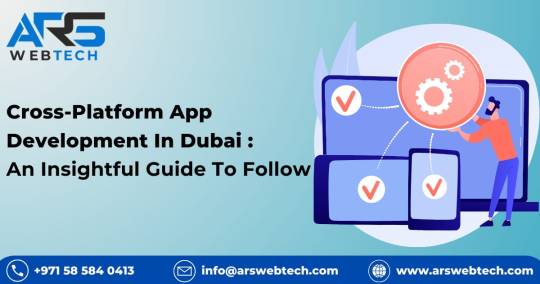
In the heart of the United Arab Emirates, the dynamic world of mobile app development is evolving rapidly, and Dubai is at its forefront. This guide delves into the world of cross-platform app development, highlighting its essentials and showcasing leading mobile app development firms in the UAE, like ARS Webtech.
An Insightful Overview About Cross-Platform App Development
Cross-platform app development involves creating mobile applications that run on multiple platforms using a single codebase. This approach contrasts with traditional native app development, which requires writing separate code for each platform, such as Java or Kotlin for Android and Swift or Objective-C for iOS.
Benefits of Cross-Platform App Development By Mobile App Development Companies UAE
Code Reusability: Developers can write and manage code that works across various platforms, reducing development time and effort.
Cost and Time Efficiency: Faster and more economical than developing individual native apps, it simplifies the entire development cycle.
Wider Market Reach: A single app can target different platforms, expanding market reach.
Consistent User Experience: Cross-platform frameworks support maintaining a consistent experience across platforms.
Faster Deployment and Updates: Facilitates simultaneous feature release across all platforms.
Popular Cross-Platform Development Frameworks
Flutter: Known for creating visually appealing apps, it's a strong choice for businesses in Dubai.
React Native: Supported by Facebook, it allows developers to build mobile apps using React and JavaScript, known for its flexibility and seamless integration.
Best Practices In Cross-Platform App Development
Prioritize User Experience: Ensuring apps function flawlessly with an intuitive interface is crucial.
Security Considerations: Especially important in sectors like healthcare and e-commerce, robust security measures are essential.
Scalability: The app should accommodate increased user traffic and additional features as the business grows.
Regular Updates and Maintenance: Ensuring the app remains compatible with the latest operating systems and user expectations.
Integration of Emerging Technologies: Incorporating AI, IoT, 5G connectivity, and machine learning enhances user experiences and contributes to Dubai's smart city initiatives.
Blockchain for Increased Security: Integrating blockchain technologies can add an extra layer of security, particularly in sensitive industries.
Conclusion
Cross-platform app development is a strategic choice for businesses in Dubai looking to maximize their digital presence. Companies like ARS Webtech are at the forefront of this movement, driving innovation and excellence in the mobile app development scene.
FAQs
1. Which frameworks are commonly used for cross-platform app development in Dubai?
Flutter and React Native are two prominent frameworks. Flutter is known for its visually stunning apps, while React Native offers flexibility and seamless integration.
2. How do mobile app development companies in Dubai prioritize user experience in cross-platform apps?
User experience is a top priority, ensuring consistent and delightful interfaces across devices.
3. How to choose between Flutter and React Native?
The choice depends on specific project requirements, design preferences, development speed, and existing tech stacks.
For further guidance or to start your cross-platform app development journey, contact ARS Webtech at +971585840413.
#ios app development#mobile app company#mobile app developer company#android#digital marketing#mobile app#digital marketing agency#digital marketing company#digital marketing strategy#digital marketing services
2 notes
·
View notes
Text
App Development frameworks
How do the most popular app development frameworks contribute to mobile app development?
In today’s digital landscape, mobile applications (app development frameworks) have become a necessity for businesses to reach their target audience effectively. With the ever-growing demand for innovative and user-friendly mobile applications, developers are constantly seeking efficient ways to build high-quality applications in very little time. This is where mobile app development frameworks come into play. The frameworks provide a foundation for developers to create cross-platform mobile applications that work seamlessly across various devices and OSes.
Development Frameworks Used for Developing Mobile Applications
Most popular app development frameworks
React Native (developed by Facebook) — This framework has gained immense popularity among developers due to its ability to build native-like mobile apps using JavaScript. It allows them to write the codes once and deploy them on both Android and iOS platforms. Hire React Native developers to obtain cross-platform mobile app solutions for iOS, Android, and the web and enjoy benefits like reduced costs and time and enhanced productivity and profitability. app development frameworks
Flutter (backed by Google) — Flutter uses the Dart programming language and provides a rich set of customizable widgets, enabling developers to create visually appealing and responsive applications. Its hot reload feature helps the developers change the codes in real time and obtain immediate visual updates. If you opt to hire Flutter developers, your cross-platform applications will have a quicker time-to-market with a single codebase for all the platforms. app development frameworks
Ionic (open-source framework) — It uses technologies like HTML, CSS, and JavaScript in the development of cross-platform mobile applications. It enables developers to provide end users with a consistent user experience across multiple platforms. It will be a smart choice to hire Ionic developers when it comes to obtaining a feature-rich cross-platform mobile application. app development frameworks
Kotlin (open source, originated at JetBrains) — This is another app development framework that allows developers to share codes between Android and iOS platforms. It seamlessly works with Android Jetpacks (a tool provided by Google). Hire Kotlin developers to enjoy improved app performance and a better user experience with access to modern technologies. app development frameworks
Hire Experts
In today’s mobile-driven world, mobile app development has become a crucial aspect of achieving business success. Hiring the right mobile app developer is essential to obtaining a high-quality application. With various frameworks available, such as React Native, Flutter, Ionic, and Kotlin, selecting the ideal developer can be challenging. A skilled developer can help you cut down on the cost of application development. Correspondingly, it will lead to an increase in the ROI value. Hire the best developers from WEBSTEP Technologies. Visit https://www.webstep.in to obtain more information and connect with them to acquire a cutting-edge mobile solution for your business. app development frameworks
2 notes
·
View notes
Text
What is the Best Mobile Application Development Framework, Flutter, or React Native?
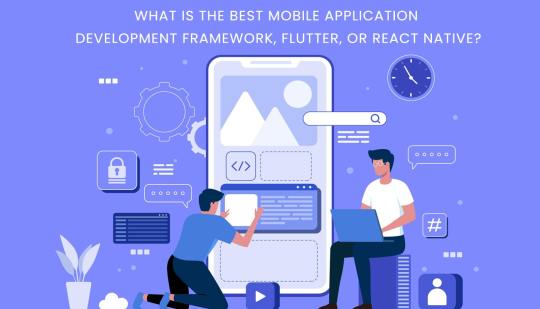
As an ever-increasing number of individuals are accepting modernized innovation in technology, the interest in mobile applications has expanded step by step.
Hybrid mobile frameworks are acquiring prevalence. The presence of React Native (RN) in 2015 opened astounding chances to assemble applications for iOS and Android utilizing one codebase. Thus, it permitted us to solve two problems at once and not rework a similar code two times. Large firms like UberEats, Discord, and Facebook moved to React Native, a powerful promotion.
Google didn’t stand separated; they saw the immense popularity of RN. Subsequently, Google presented an alpha version of its hybrid framework called Flutter in 2017. Flutter likewise turned into an extremely famous framework. The improvement of a framework like React Native prompts confusion over what to decide for hybrid mobile app development:
React Native or Flutter? Nonetheless, there’s another significant inquiry which you ought to choose before this: Is it better to develop a hybrid or native mobile apps?
Both cross- platform application has its upsides and downsides and prevalence
Flutter
Flutter is an open-source mobile application development Software tool sh that has design & created by Google. It had its main release in May 2017. Flutter has composed into the C, C++, Dart, and Skia Graphics Engine. Flags have been created by Google. Creating Android and Android applications is additionally utilized. The SDK is free and sent off as a source designer to explore and make strong, powerful applications around.
Why choose to Flutter for Android and iOS mobile application development?
Cross-platform
Hot Reload
High compatibility with programming languages
Faster and improved native performance
Appealing UI
Accessible SDKs and native features
The functional and reactive framework
React Native
React Native is a structural framework made by Facebook that permits us to foster local mobile applications for iOS and Android with a solitary JavaScript codebase.
React native is a genuine mobile application, additionally open-source application development system which is created by Facebook. Rouse that ideas should be created on the web for mobile development. Reactive native is accustomed to making iOS and Android applications. IT was delivered in March 2015. In such a manner, JavaScript is created. Notwithstanding, the application appearance is by all accounts a native app.
Why choose to React Native forAndroid and iOS app development?
Seamless and synchronous API
Seamless and synchronous API
Quick performance
Greater reach
Which is Better: Flutter or React Native?
Flutter ranks positions higher with 75.4% and React Native likewise cut with 62.5% among most cherished frameworks.
Both Flutter and React Native are famous and exceptionally used by the application developers for the development of cross-platform applications. Every single one of them has their one-of-a-kind upsides and downsides, stability in development, speed, and much more.
Flutter is a new framework, and it is expanding and growing slowly and gradually. Compared to Flutter, React Native is in the industry for a long time now. Hence, it is mature enough that leading brands have experienced its benefits of it. While Flutter is yet to have such strong case studies.
The choice of the right framework can be best done based on your mobile app requirements.
Flutter is new in the framework market, and it is extending and developing gradually and slowly. Contrasted with Flutter, React Native is in the business for quite a while now. Thus, mature an adequate number of leading brands have encountered its advantages of it. While Flutter is yet to have areas of strength for such investigations study.
#marketing#socialmediamarketing#digitalmarketing#branding#contentstrategy#jexcore#marketingagency#marketingdigital#marketingservices#digital marketing
2 notes
·
View notes
Text
Choosing the Right Programming Language for iPhone Apps

The programming language you use must be carefully chosen while creating an iPhone app. With so many alternatives available, each with benefits and drawbacks of its own, choosing the best programming language becomes an important choice. In this article, we’ll look at the most used programming languages for creating iPhone apps, their capabilities, and things to keep in mind while making your decision.
Objective-C: The standard programming language for creating iOS apps is Objective-C. It has a lengthy history and is still frequently utilised in numerous apps that are already in existence. A dynamic runtime, a large selection of libraries, and a wealth of developer resources are all provided by Objective-C. It has a high learning curve, though, so beginners may find it difficult.
Swift: Swift, which Apple first made available in 2014, is currently the language of preference for creating iOS apps. It is a more approachable programming language than Objective-C that is contemporary, secure, and quick. Swift enables programmers to produce clearer, shorter code, which lowers the likelihood of mistakes. It is a dependable option for creating trustworthy and effective iPhone apps because of its powerful type inference and memory management capabilities.
React Native: Despite not being a programming language in and of itself, React Native is remarkable because of how widely used and cross-platform it is. It enables programmers to use JavaScript to create iOS apps that seem native. Developers may create code once using React Native and deliver it to numerous platforms, such as iOS and Android. Even while it has a lot to offer in terms of development speed and code reuse, it could be difficult to access some platform-specific features.
Flutter: Similar to React Native, Flutter is a cross-platform framework that enables developers to create iOS apps using the Dart programming language. Flutter offers a rich set of pre-designed widgets, a hot reload feature for rapid development, and excellent performance. It allows developers to build visually appealing and highly customizable user interfaces. However, as with React Native, there may be limitations in accessing certain platform-specific features.
C# and Xamarin: For programmers with prior Microsoft technology development knowledge, creating iOS apps using C# and Xamarin is a realistic choice. Using C# and the.NET framework, developers are able to create native iOS apps thanks to Xamarin. It provides extensive platform-to-platform code interchange and access to native APIs, assuring a native user experience. In contrast to other solutions, Xamarin could need more setup and configuration.
Factors to Consider When Choosing a Programming Language:

App Complexity: Consider the complexity of your app and the specific features you require. Some programming languages may be better suited for certain functionalities or performance-intensive tasks.
Developer Skills: Evaluate the expertise of your development team. If they have experience with a particular language, it may be more efficient to stick with that language to leverage their existing knowledge.
Community Support: The availability of resources, documentation, and community support is crucial for efficient development. Consider the size and activity of the community around the programming language you choose.
App Performance: If performance is a critical factor for your app, you should consider languages that offer efficient execution and memory management.
Longevity and Maintenance: Consider the future maintenance and scalability of your app. Choose a programming language with a solid foundation and ongoing updates to ensure compatibility with future iOS versions.
Conclusion:
A vital choice that may have a big influence on your project’s success is choosing the best programming language for creating iPhone apps. With its modern and effective coding environment, Swift has established itself as the dominant language for iOS development. But depending on the needs of your app and the expertise of your development team, other solutions like Objective-C, React Native, Flutter, and Xamarin may also be good possibilities.
To choose the best course of action for your project, evaluate its requirements and take into account the variables covered in this article.
1 note
·
View note
Text
Build the Next Fintech or Ride-Hailing Giant: Cash App & Uber Clone Development Services in 2025
In today’s digitally-driven economy, the demand for mobile-first financial and transportation solutions has exploded. Entrepreneurs and startups are racing to create the next Cash App or Uber. But building these platforms from scratch can cost a fortune and take years. That’s where clone app development steps in.

In this blog, we explore how creating Cash App clones, Uber clone apps, and similar platforms offers a cost-effective, time-saving path to launching a full-featured app. Whether you’re building a Cash App Clone App for Android, expanding into fintech, or disrupting ride-sharing with an Uber Clone, we’ve got the insights you need.
What is a Cash App Clone?
A Cash App Clone is a fintech mobile app solution that replicates the core features of the original Cash App, including:
Peer-to-peer (P2P) payments
Bank account linking
Cryptocurrency support (Bitcoin transactions)
Stock investments
Instant transfers
Building a Cash App Clone App means enabling your users to send, receive, and store money — all within a few taps.
Why Launch a Cash App Clone in 2025?
Fintech is booming: Global digital payment market is expected to reach $20+ trillion by 2026.
Smarter AI integrations: With AI and ML, clone apps can offer fraud detection, smart notifications, and personalized experiences.
Increased demand for secure payments: End-to-end encryption, biometric login, and compliance support are now default expectations.
White-label development is mainstream: Clone scripts can be customized, branded, and deployed rapidly — saving you 70% of development costs.
Cash App Clone for Android: Why It Matters
Android commands over 70% of the mobile market, especially in emerging markets like Africa, Southeast Asia, and Latin America.
A Cash App Clone Android app lets you:
Reach broader audiences
Customize UI for region-specific use
Integrate local payment gateways like Paytm, Mpesa, or Razorpay
Seamlessly integrate with mobile wallets, crypto exchanges, and KYC APIs
The rise of progressive web apps (PWA) and Flutter-based development allows for cost-efficient and high-performance Android solutions.
Enter Uber Clone: Reinventing Ride-Sharing with Your Brand
A Uber Clone App is a feature-rich platform that replicates the ride-hailing model including:
Real-time driver tracking
Fare calculation & surge pricing
Google Maps API integration
In-app payments & wallets
Driver-partner dashboards
Uber Clone Use Cases Beyond Taxis
On-demand logistics/delivery apps
Home service platforms
Healthcare appointment scheduling
Auto-rickshaw/2-wheeler bookings (popular in Asia/Africa)
Clone app frameworks allow you to adapt Uber’s business logic for nearly any on-demand service.
Clone App Development Trends in 2025
AI-Powered Personalization: Predictive analytics, smart chatbots, and dynamic pricing based on demand and behavior are becoming standard.
Decentralized Finance (DeFi) Integration: Especially for Cash App clones, supporting crypto wallets, DeFi staking, and cross-chain transactions adds tremendous user value.
Biometric Security: Fingerprint, facial recognition, and voice biometrics are now replacing PINs.
Cloud-Native Infrastructure: Using AWS, Azure, or GCP makes your clone app scalable and secure, handling millions of transactions per minute.
Voice Commerce: Users now want to send money or book rides using Alexa, Siri, or Google Assistant.
Benefits of Clone App Development
Cost-Efficiency: Up to 70% cheaper than building from scratch.
Faster Time-to-Market: Launch in weeks, not months.
Proven UX/UI: Based on models already accepted by users.
Customization-Ready: Modify design, features, and workflows.
API-Friendly: Easy to integrate with third-party services (KYC, payment gateways, SMS).
Who Should Invest in Cash App or Uber Clone Apps?
Fintech startups looking to offer payment and investment services.
Transportation startups targeting specific regions (e.g., Africa, LATAM).
Businesses pivoting to on-demand models — health, delivery, logistics.
Entrepreneurs building niche marketplaces (e.g., rides for women only, crypto-focused remittance).
Challenges to Consider
Regulatory Compliance: PCI DSS, GDPR, KYC/AML must be integrated.
Scalability: A good clone app should be able to scale as your user base grows.
Cross-Platform Compatibility: Clone apps must work seamlessly across Android, iOS, and web.
User Trust: Security and intuitive UX play a massive role in user retention.
Ready to Launch Your Own Cash App or Uber Clone?
The fintech and on-demand industries are exploding. If you’ve been thinking about building the next big Cash App or Uber-style service, the time is now.
Rather than reinventing the wheel, use clone technology to build fast, spend smart, and scale quickly.
Whether it’s a Cash App Clone Android app, a full-featured Uber Clone, or a hybrid super app that combines payments, rides, and food delivery, you need the right development partner.
Why Choose Webbalze Softtech?
Webbalze Softtech is a leading IT company specializing in:
Clone App Development (Cash App, Uber, Venmo, DoorDash, Zelle)
End-to-End Customization
API & Gateway Integration
Security & Compliance-first Development
Post-launch Support & Upgrades
With deep expertise in mobile-first solutions, scalable architecture, and user-centric design, Webbalze Softtech can help you go from idea to app store — fast.
Contact us today to build your future-ready clone app and transform your vision into a working business.
#digital marketing services#web development services#website promotions#Clone Cash App#CashApp Clone#Cash App Clone Android#Uber Clone
0 notes
Text
🔥 Imagine building your app once and deploying it on both Android and iOS seamlessly-saving almost HALF your development costs! 🚀
In this video, discover why cross-platform development is the hottest trend in mobile app creation. Learn how industry giants like Instagram and Uber Eats leverage frameworks such as Flutter and React Native to deliver smooth, consistent user experiences. We'll dive into major benefits:
✅ Cut your development costs by nearly 40%
✅ Reach the market faster with rapid updates
✅ Instantly tap into both Android & iOS audiences
✅ Ensure a consistent app experience across all devices
Excited about this trend? Comment below to share your thoughts, and don't forget to check out our other videos on futuristic mobile app trends!
📌 Bonus: Need personalized insights into mobile app development? Check out the original video - https://www.youtube.com/shorts/abeS7adOgao
#Cross Platform Development#React Native Mobile App Trends#App Development 2025#Cross platform app development#Flutter app development company#React Native app development#Build app for Android and iOS#Mobile app development cost reduction
0 notes
Text
Web Designer in Bangalore – Designing Future-Ready Digital Identities with Hello Errors

In a world where your website is often the first handshake between your brand and a customer, the quality of your design matters more than ever. If you're looking for a reliable, tech-savvy, and creative web designer in Bangalore, you're in the right place.
As Bangalore cements its place as India’s innovation capital, businesses of all sizes—from solopreneurs to tech unicorns—are racing to build high-impact online presences. But in this sea of digital noise, simply having a website is no longer enough. You need a digital experience that tells your story, converts visitors into customers, and adapts to user expectations.
That’s where Hello Errors comes in.
The Bangalore Business Boom and Digital Expectations
Bangalore isn’t just home to IT parks and tech giants—it’s an ecosystem that supports thousands of SMEs, SaaS startups, D2C brands, and creative agencies. In this environment, your website is your pitch, portfolio, storefront, and customer service tool rolled into one.
A professional web designer in Bangalore understands the regional nuances, user behavior, and competitive trends specific to this market. That’s why working with a local design partner like Hello Errors gives you a competitive edge.
Why Hello Errors is the Preferred Web Designer in Bangalore
At Hello Errors, we design websites that are more than just digital brochures—we create dynamic ecosystems that drive engagement, search visibility, and conversion.
Here’s what makes our approach stand out:
1. Tech-Stack Versatility
We work across modern frameworks like React.js, Next.js, Tailwind CSS, and CMS platforms like WordPress and Webflow, depending on your needs. Whether it’s a sleek static site or a high-performance web app, we adapt our tech to your project—not the other way around.
2. Cross-Industry Experience
From real estate firms to lifestyle brands, we’ve designed for diverse sectors, making us adaptable to your industry-specific needs. This gives us insight into what works—and what doesn't—for different audiences.
3. Brand-First Thinking
We study your tone, voice, color psychology, and competition before we even begin the wireframe. Our design work amplifies your brand story, not just your product list.
Web Design Trends That Businesses in Bangalore Shouldn’t Ignore
To remain relevant in today’s fast-paced online space, your website should reflect the latest design principles and functionality standards. As an experienced web designer in Bangalore, Hello Errors integrates the following trends into client projects:
🔸 Micro-Interactions
These tiny animations or feedback cues add delight and improve user experience. For example, a smooth button animation or hover effect gives the site a modern, interactive feel.
🔸 Voice Search Optimization
As voice search grows in India, we optimize design layouts and content structures to support conversational search queries.
🔸 Dark Mode Compatibility
Many users now prefer dark mode, and we ensure your design supports both light and dark experiences for accessibility.
🔸 Minimalist Navigation
Less is more. We streamline navigation into sticky menus, hamburger icons, and content-first layouts that reduce cognitive load.
Services Beyond Just Design
Hello Errors is not your average web designer in Bangalore—we are a 360° digital enabler. In addition to stunning websites, we provide:
App Development for Android, iOS, and cross-platform tools like Flutter
Search Engine Optimization (SEO) for traffic and visibility
Artificial Intelligence & Machine Learning integration for personalization, chatbots, and automation
UI/UX Consulting for data-driven interface improvements
We don’t stop at launch. We help you optimize, scale, and adapt.
Key Benefits of Choosing Hello Errors for Your Web Design
When clients work with Hello Errors, they enjoy a blend of creativity, tech, and strategy. Here’s why we’re often recommended as a top web designer in Bangalore:
✅ Fast Turnarounds Without Quality Sacrifice
We’re structured to deliver in weeks—not months—without compromising on detail or performance.
✅ Transparent Pricing Models
Whether it’s a one-page website or an enterprise-grade portal, you get upfront quotes and no surprise costs.
✅ Focus on Speed and Core Web Vitals
Our sites score high on Google PageSpeed Insights, which boosts SEO and ensures happy visitors.
✅ Ongoing Support & Maintenance
Need updates? New features? Analytics help? We’re available even after launch, offering maintenance packages and on-demand support.
What Our Clients Love About Us (Client-Centric Touchpoints)
“As a first-time founder, I needed a web designer in Bangalore who could understand my brand and market. Hello Errors made the process simple and stress-free.” — E-commerce Startup, Jayanagar
“We saw a 40% increase in organic traffic within three months thanks to their SEO-optimized design. Highly recommend Hello Errors!” — B2B SaaS Firm, HSR Layout
These success stories reflect our commitment to results—not just pretty visuals.
How We Work – A Peek Into Our Process
Choosing a web designer in Bangalore should feel empowering, not overwhelming. Our tried-and-tested workflow keeps things structured and collaborative:
Discovery Call – Understand your vision, target users, and goals
Wireframing – Create basic layout blueprints
Visual Design – Build your brand look using design systems and Figma prototypes
Development – Code the site using clean, SEO-friendly methods
Testing & Launch – Run usability, speed, and mobile tests before going live
Post-Launch Support – Keep optimizing and evolving your digital presence
Ready to Work With a Web Designer in Bangalore Who Gets It?
Let’s be honest—web design isn’t just about looking good anymore. It’s about performing well, being search-friendly, and delivering value. At Hello Errors, we’re passionate about helping Bangalore-based businesses turn their websites into their best-performing digital assets.
📞 Book your free consultation today and discover what it’s like to work with a web design team that prioritizes your growth.
Final Thoughts
The digital revolution in Bangalore demands more than just online presence—it demands digital excellence. Your brand deserves a partner that blends innovation, design, and strategy.
If you're searching for a reliable, performance-focused web designer in Bangalore, look no further than Hello Errors. Let’s build something powerful—together.
#WebDesignerInBangalore#HelloErrors#BangaloreWebDesign#UIUXDesign#DigitalTransformation#SEOFriendlyWebsite#ResponsiveDesign#BangaloreStartups#TechInBangalore#AIInWebDesign
0 notes
Text
Flutter for Enterprise – Scalable, Secure, and Future-Ready Apps for Big Business

The Demands of Enterprise Mobility in 2025
Enterprise businesses today are more connected, mobile, and digitally driven than ever before. From enabling field workers to delivering customer-facing apps, enterprises rely on mobile solutions to drive productivity, profitability, and performance. However, scaling mobile development across departments, regions, and user types is far from simple.
Native development—while reliable—is often expensive, resource-heavy, and difficult to scale. With different teams for iOS and Android, mismatched user experiences, and prolonged deployment timelines, enterprises find themselves buried in technical debt.
To combat these inefficiencies, leading organizations are adopting cross-platform solutions that provide the speed of hybrid development with the quality and performance of native apps. Enter Flutter—Google’s game-changing mobile development framework.
Why Flutter Is a Smart Investment for Enterprise Mobility
Flutter is not just a mobile development tool—it’s a business enabler. It helps enterprises build fast, deliver consistent user experiences, and integrate seamlessly with backend systems. Its ability to write once and deploy everywhere saves time, resources, and effort.
At Xenelsoft Technologies, our enterprise-grade Flutter app development services help large organizations create robust, secure, and scalable mobile apps that align with their digital goals. Whether it’s an internal app for HR, a customer engagement platform, or a custom analytics dashboard, we tailor our Flutter solutions for performance, compliance, and cross-platform excellence.
Top Benefits of Flutter for Enterprises
Flutter is built with flexibility and scale in mind—two essential factors for enterprise-grade applications. Here’s why it’s becoming the preferred choice:
1. One Codebase for All Platforms
Maintain one codebase for iOS, Android, desktop, and web. This drastically reduces the workload of IT teams and ensures feature parity across platforms.
2. Enterprise-Grade Security
Flutter apps can integrate with secure authentication protocols, encrypted databases, and compliance standards like HIPAA, GDPR, and SOC 2.
3. Faster Development Cycles
Flutter’s hot reload and modular structure allow for rapid development, testing, and deployment—perfect for enterprises following agile methodologies.
4. Scalability
Flutter’s architecture supports apps with complex logic, large data sets, and multiple integrations, making it suitable for large user bases and multi-department use.
5. Custom UI and Branding
Flutter provides complete control over every pixel, ensuring corporate branding and design guidelines are maintained across all touchpoints.
Xenelsoft Technologies – Flutter Experts for Enterprise Success
Enterprises need more than just coders—they need problem solvers who understand scale, compliance, and business strategy. At Xenelsoft Technologies, we offer full-stack Flutter app development services tailored to large organizations.
Our team helps enterprises:
Identify digital opportunities within their current processes
Design UI/UX that enhances productivity and engagement
Integrate seamlessly with CRMs, ERPs, and third-party APIs
Build secure architecture aligned with compliance policies
Automate deployment pipelines for continuous delivery
Provide multi-level access control for employees and stakeholders
From initial planning to post-launch optimization, we guide enterprises through every stage of the app development lifecycle.
Case Study: Building an Internal CRM App for a Telecom Giant
A telecom enterprise needed a mobile CRM application for its 4,000+ field agents across the U.S. The native solution they had was slow, fragmented, and difficult to update. The enterprise was spending heavily on maintaining two different codebases and training staff on both platforms.
Solution by Xenelsoft Technologies:
Designed and developed a unified Flutter-based CRM
Integrated with the client’s legacy ERP and customer database
Implemented offline sync, biometric login, and secure data encryption
Built custom dashboards and ticketing workflows for multiple user roles
Results:
60% reduction in app maintenance costs
70% faster release cycles
90% improvement in agent adoption rate
Full compliance with internal data policies and security protocols
Flutter helped the enterprise modernize without overhauling their entire backend—demonstrating the power of hybrid architecture done right.
Industries Where Flutter Excels at Enterprise Scale
Flutter isn’t limited to consumer apps. Its robustness makes it ideal for B2B, internal, and mission-critical use cases across various sectors:
Banking & Finance
Build secure financial tools with real-time reporting, multi-level access, and two-factor authentication.
Healthcare
Create apps for electronic health records, teleconsultations, and compliance with HIPAA and HL7.
Manufacturing
Develop mobile dashboards for equipment monitoring, workforce management, and inventory control.
Retail
Deploy point-of-sale systems, loyalty apps, and customer service platforms with consistent UI.
Logistics & Transportation
Enable shipment tracking, vehicle management, and route optimization with offline capability.
Enterprise-Ready Flutter Development Workflow
We follow a proven process to deliver secure, scalable, and usable Flutter apps for enterprises:
Discovery & Planning: We align the app goals with your enterprise IT strategy and compliance requirements.
Architecture Design: Scalable and secure architecture is built to handle large volumes of data and users.
UI/UX Development: We create role-based interfaces that cater to different departments and job functions.
Flutter App Development: Using best practices in Dart and Flutter, we build robust, cross-platform codebases.
Testing & QA: Automated testing ensures cross-platform compatibility, security, and functionality.
Deployment & Support: CI/CD pipelines help with automated releases. We also provide long-term maintenance and updates.
Security and Compliance in Flutter
Flutter can meet strict enterprise security standards when built correctly. At Xenelsoft Technologies, we follow industry best practices for:
Data Encryption (TLS, AES)
Authentication (OAuth 2.0, biometrics, multi-factor)
Access Control (role-based, department-based)
Secure APIs and backend integrations
Compliance testing for HIPAA, GDPR, SOC 2, and more
We also conduct regular vulnerability scans and penetration testing to keep your data and users protected.
Flutter’s Role in Digital Transformation
Flutter is more than a framework—it’s a strategic tool for long-term enterprise innovation. It enables:
Rapid prototyping and testing of new ideas
Streamlined workflows with consistent mobile tools
Expansion to web and desktop platforms without re-coding
Integration with cloud platforms like AWS, Azure, and Google Cloud
Real-time analytics and dashboarding
By choosing Flutter, enterprises prepare themselves for the future of application development: one where speed, scale, and performance work together.
Conclusion: Powering the Next Generation of Enterprise Apps
Flutter has changed the game for enterprises that demand agility without sacrificing quality. With its ability to unify development, reduce cost, and support modern security protocols, it is quickly becoming the gold standard for mobile development in corporate settings.
Xenelsoft Technologies is proud to lead the charge in enterprise mobile transformation. Our Flutter app development services are tailored to the scale, security, and complexity of large businesses—helping them digitize smarter and faster.
Let’s build enterprise-grade apps that move your business forward—with Flutter.
#flutter app development company#flutter app development services#hire flutter app developers#custom flutter app development company#best flutter app development company
0 notes
Text
Mobile Application Developers: Shaping the Future of Digital Innovation
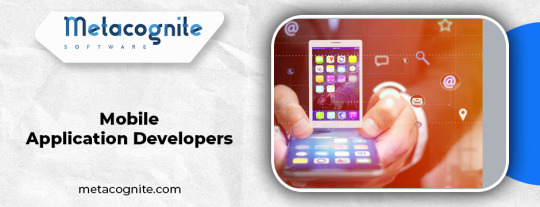
In today’s fast-paced digital world, mobile devices have become essential to everyday life. From communication and entertainment to business and education, everything is just a tap away. Behind this seamless mobile experience are the skilled professionals known as Mobile application developers. These experts are the driving force behind the apps we rely on, transforming innovative ideas into functional and engaging mobile solutions.
The Role of Mobile Application Developers
Mobile application developers are software engineers who specialize in creating, testing, and maintaining applications for mobile devices such as smartphones and tablets. Their expertise spans various platforms, including iOS, Android, and cross-platform frameworks like Flutter and React Native.
Whether it’s an e-commerce app, a fitness tracker, or a fintech solution, mobile developers ensure the app is user-friendly, visually appealing, and high-performing. Their role extends beyond writing code—they collaborate with designers, product managers, and clients to bring digital visions to life.
At Metacognite, a leading mobile app development company, developers are not just coders—they are problem solvers, innovators, and digital architects focused on delivering seamless user experiences through cutting-edge technology.
Why Mobile App Development Is Essential for Businesses
Mobile app development is no longer a luxury—it's a necessity for businesses aiming to stay competitive. A mobile app can enhance customer engagement, improve brand visibility, and drive sales. It offers users direct access to your services or products, making interactions faster and more convenient.
Whether you're a startup looking to disrupt the market or an enterprise seeking digital transformation, investing in mobile app development offers countless benefits:
Enhanced User Experience: A well-designed app is intuitive and user-friendly.
Direct Marketing Channel: Apps allow push notifications, special offers, and updates.
Brand Recognition: A branded app keeps your business top-of-mind for users.
Customer Loyalty: Apps foster stronger, long-term relationships with customers.
Metacognite: Your Partner in Mobile App Development
Choosing the right development partner is crucial to the success of your mobile strategy. At Metacognite, we offer end-to-end mobile app development services—from strategy and UI/UX design to development, testing, and post-launch support.
Our team of expert mobile application developers understands that each business is unique. We work closely with clients to understand their goals, target audience, and technical requirements before crafting customized mobile solutions that drive real results.
Whether you need a native iOS app, an Android app, or a cross-platform solution, our developers use the latest technologies and agile methodologies to deliver secure, scalable, and performance-driven apps.
What Sets Metacognite Apart?
User-Centric Design: We prioritize the end user, creating intuitive interfaces that enhance usability.
Agile Development: Our agile workflow ensures faster development cycles and flexibility.
Cutting-Edge Technology: From AI integration to cloud-based backends, we implement the latest tech trends.
Post-Launch Support: Our relationship doesn’t end at launch—we offer ongoing support and updates.
Final Thoughts
As the digital landscape continues to evolve, the demand for skilled mobile application developers will only grow. Businesses that embrace mobile app development today are positioning themselves for long-term success in an increasingly mobile-first world.
If you're ready to turn your app idea into reality or need to enhance your existing mobile presence, Metacognite Software is here to help. Our team of dedicated professionals will guide you through every stage of development, ensuring your app not only meets but exceeds expectations.
0 notes